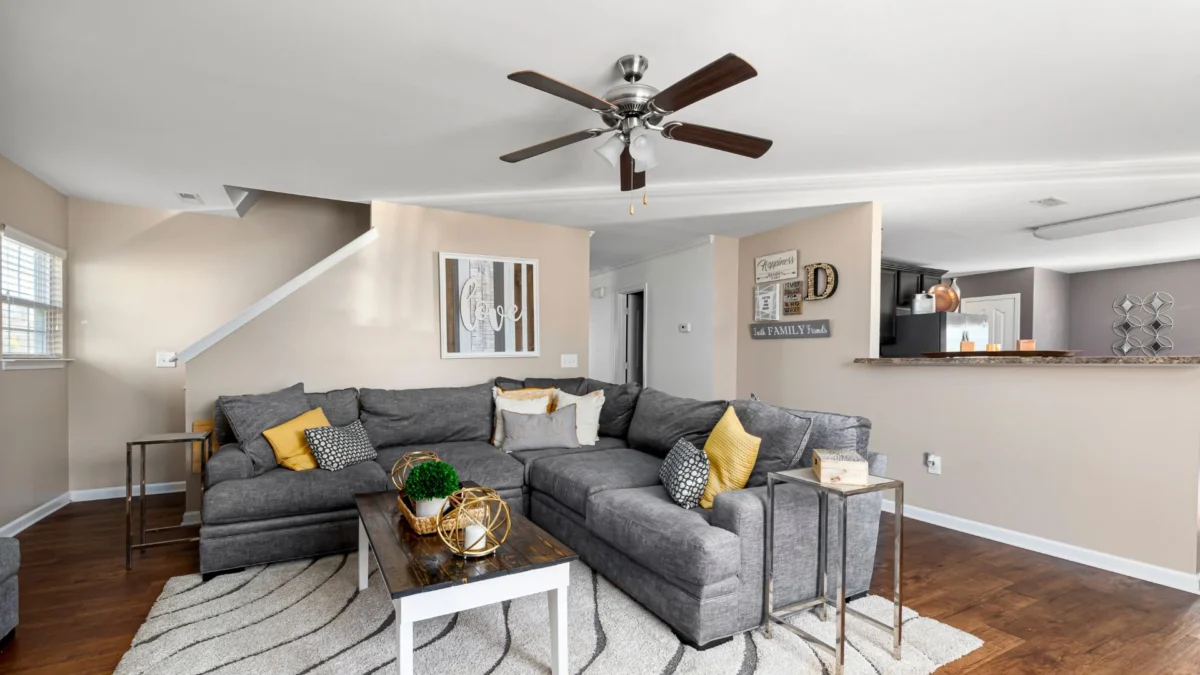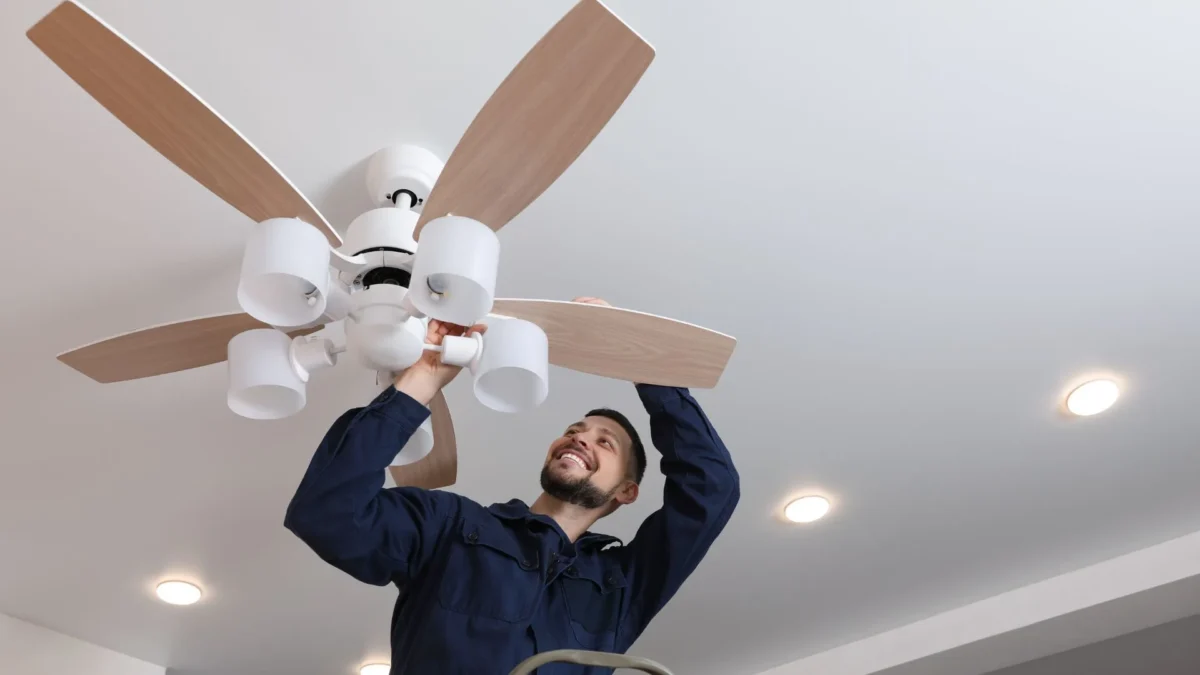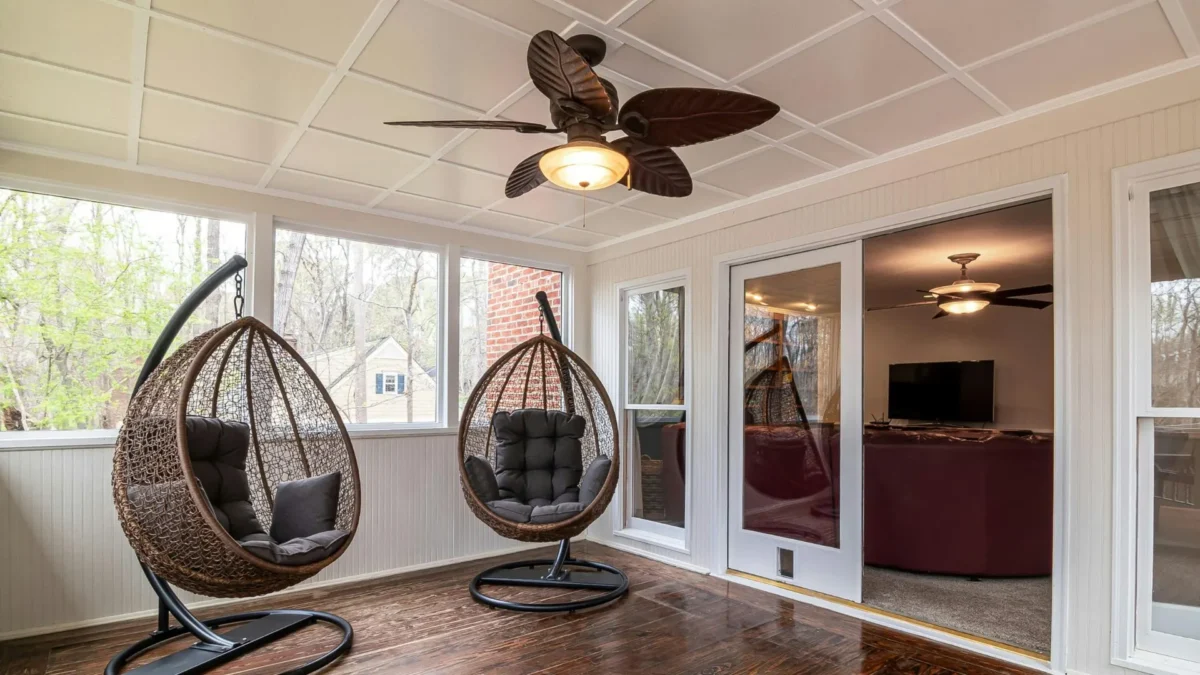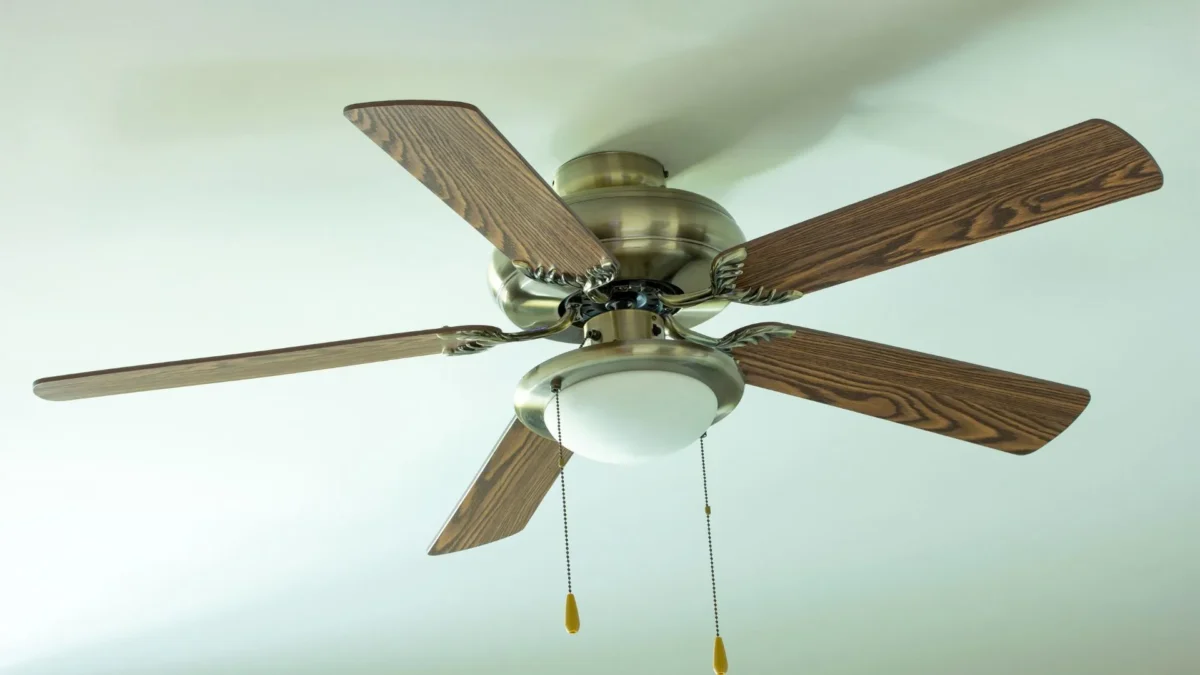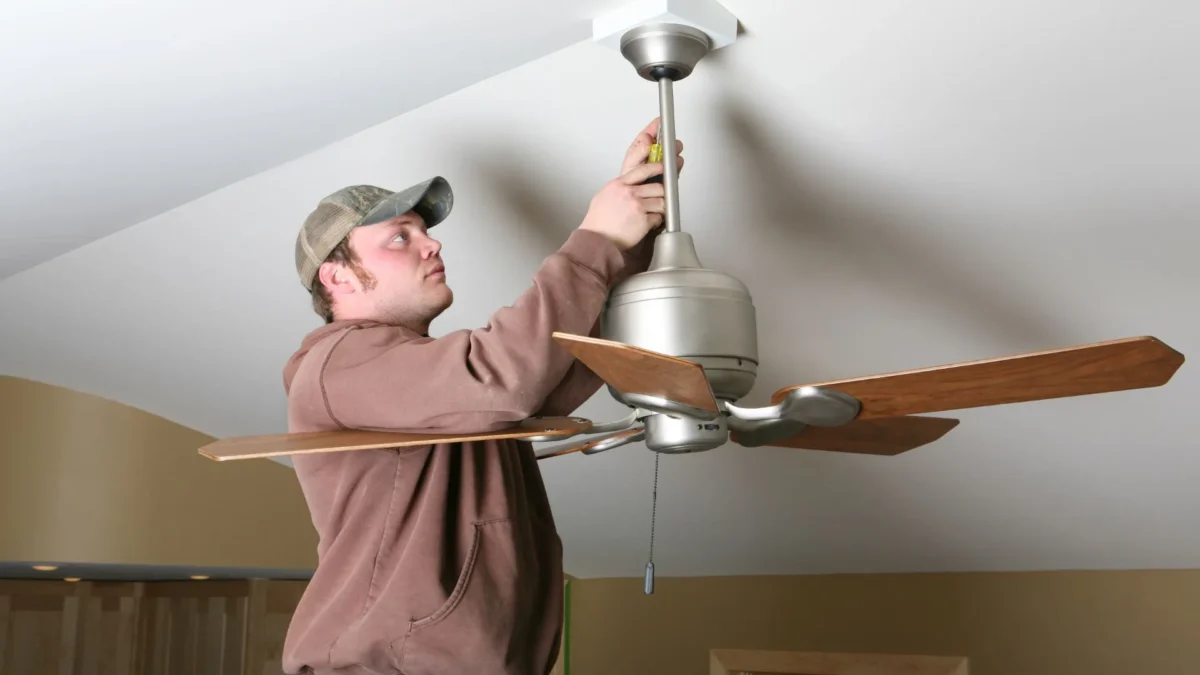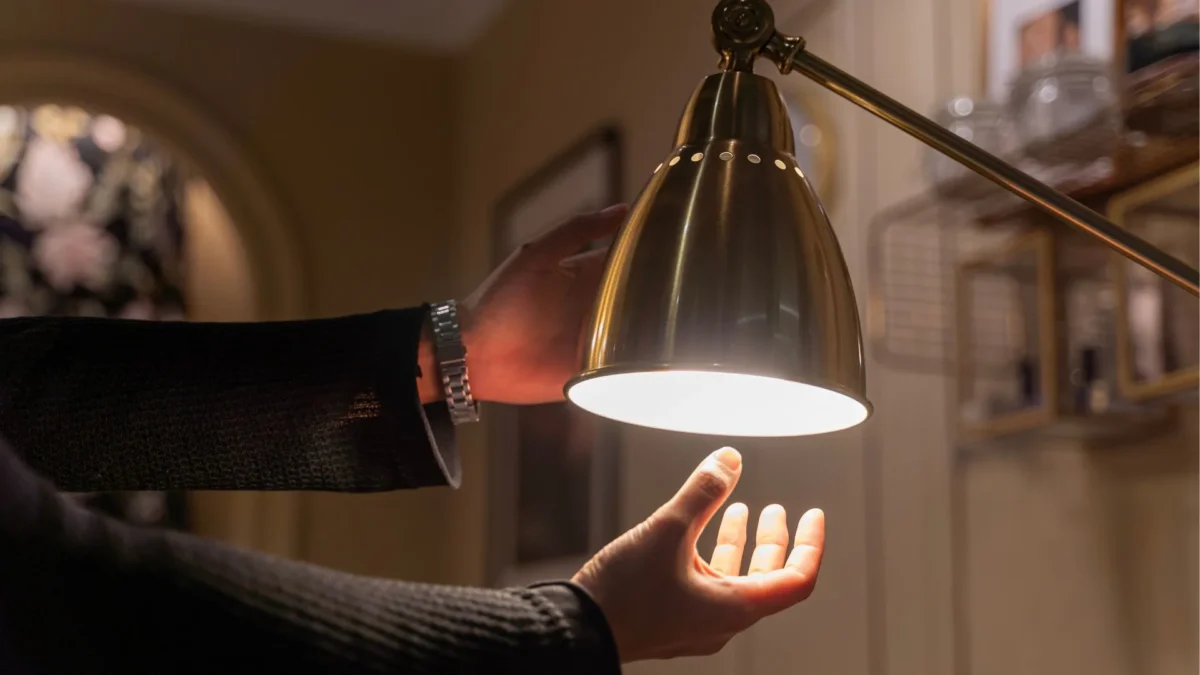BLDC fans are energy-efficient, durable, and smart compared to normal fans. While a normal fan uses around 75–80 watts, a BLDC fan consumes only 28–35 watts for the same airflow. If you want to save electricity, reduce noise, and enjoy modern control features, a BLDC fan is the better choice.
What Is a BLDC Fan?
A BLDC (Brushless Direct Current) fan is an advanced ceiling fan powered by an electronic circuit and a DC motor instead of a traditional AC motor.
It eliminates brushes and friction, resulting in smooth rotation, less noise, and higher energy efficiency.
In simpler words — BLDC fans are the modern version of ceiling fans designed for the future of energy-saving appliances.
What Is a Normal Fan?
A normal fan, also known as a conventional AC fan, runs on an induction motor that converts alternating current (AC) into mechanical energy.
It’s affordable and widely used, but due to higher friction and resistance, it consumes more electricity and needs more maintenance over time.
Key Difference Between BLDC Fans and Normal Fans
Here’s a quick comparison to understand how both types perform in real-world usage:
| Feature | BLDC Fan | Normal Fan |
|---|---|---|
| Technology | Brushless DC Motor | Induction Motor |
| Power Consumption | 28–35 watts | 75–80 watts |
| Air Delivery | High and consistent | Moderate |
| Noise Level | Very low | Noticeable hum |
| Remote Control | Yes (Smart Control) | Usually not available |
| Speed Control | Through remote or app | Regulator-based |
| Durability | Long lifespan (no brush wear) | Shorter lifespan |
| Cost | Slightly higher initially | Cheaper initially |
| Savings on Electricity | Up to 65% | Low |
| Ideal For | Energy-conscious and smart homes | Budget-conscious buyers |
How Does a BLDC Fan Work?
A BLDC fan operates on electronic commutation rather than mechanical.
Here’s how it works step-by-step:
- The DC power supply is converted from AC using an internal SMPS (Switch Mode Power Supply).
- Sensors and microcontrollers detect the rotor position and adjust the motor speed precisely.
- The electronic circuit controls rotation without friction, ensuring efficient performance.
- This results in smooth operation, minimal heat, and less energy loss.
So, the efficiency comes from intelligent electronic control instead of simple mechanical rotation.
Why BLDC Fans Are Gaining Popularity
The shift towards energy-efficient home appliances and smart home solutions has made BLDC fans the new favorite.
Here’s why:
1. Massive Power Savings
A BLDC fan consumes up to 65% less electricity than a normal fan.
If a normal fan costs ₹200/month in power bills, a BLDC fan will cost around ₹70 — that’s nearly ₹1,500–₹2,000 saved per year per fan.
2. Smart Remote Control
Most BLDC fans come with remote control or mobile app support, allowing you to:
- Adjust speed levels
- Set sleep timers
- Turn off without reaching the switch
Perfect for convenience and modern living.
3. Silent Operation
Since there are no brushes or friction points, the fan runs whisper-quiet, ideal for bedrooms, offices, or study rooms.
Read more: https://www.jivah.com/are-bldc-fans-noiseless/
4. Stable Speed at Low Voltage
Even if voltage drops below 180V, BLDC fans maintain speed and air delivery — unlike normal fans that slow down noticeably.
Read More: https://www.jivah.com/can-bldc-fan-run-on-low-voltage/
5. Durability & Low Maintenance
No brush wear means longer motor life and minimal maintenance.
You save not just on electricity but also on repairs.
Why Normal Fans Still Have a Market
Despite the benefits of BLDC fans, normal fans still dominate rural and budget markets.
Here’s why:
- Lower Initial Cost: Normal fans are cheaper upfront.
- Easy Availability: Widely available in local stores across India.
- Simple Design: Easier to repair for local electricians.
However, in the long term, the higher electricity cost and frequent maintenance often make them more expensive to operate.
Real-World Example: Power Consumption Comparison
Let’s take a real case scenario:
| Type | Power (Watts) | Units/Month (per fan) | Cost @ ₹8/unit | Annual Cost |
|---|---|---|---|---|
| Normal Fan | 75W | 45 units | ₹360 | ₹4,320 |
| BLDC Fan | 30W | 18 units | ₹144 | ₹1,728 |
Savings: ₹2,592 per year per fan.
If you have 5 fans, that’s over ₹12,000 saved yearly — which easily covers the cost difference in less than a year.
Environmental Benefits of BLDC Fans
Using BLDC fans not only saves electricity but also reduces carbon footprint.
Lower power usage means:
- Lesser demand on power plants
- Reduced CO₂ emissions
- Better sustainability
For eco-conscious homeowners, switching to BLDC technology is a small step with a big environmental impact.
Which One Should You Choose?
If you’re still confused, here’s a simple guide based on user intent and home needs:
| Your Priority | Choose |
|---|---|
| Low initial cost | Normal Fan |
| Long-term savings | BLDC Fan |
| Smart controls & remote | BLDC Fan |
| Basic usage (occasional) | Normal Fan |
| 24/7 use in hot regions | BLDC Fan |
| Noise-free performance | BLDC Fan |
| Budget for energy efficiency | BLDC Fan |
Verdict:
If you value efficiency, durability, and savings, BLDC fans are the clear winner.
They might cost slightly more upfront but save much more over their lifetime — making them the smart and sustainable choice.
Things to Consider Before Buying a BLDC Fan
- Warranty & Brand Support: Choose trusted BLDC fan manufacturers offering 2–5 years of warranty.
- Air Delivery: Check for at least 220 CMM (Cubic Meters per Minute).
- Smart Features: Look for remote, app, or voice control compatibility.
- Design & Aesthetics: BLDC fans come in sleek modern designs suitable for all interiors.
- Energy Rating: Pick models with high star ratings or BEE certification.
Why Choose Jivah?
When it comes to energy-efficient and high-performance fans, Jivah stands out as one of the most trusted BLDC fan manufacturers in India.
Here’s why homeowners and businesses prefer Jivah:
1. Cutting-Edge BLDC Technology
Jivah fans use advanced BLDC motors that deliver superior air performance with 65% energy savings, ensuring both comfort and cost-efficiency.
2. Modern Smart Controls
Enjoy convenience with remote control, timer settings, and smart app integration — designed for today’s connected lifestyle.
3. Premium Build & Silent Operation
Each fan is crafted for durability and smooth, silent airflow — perfect for homes, offices, and commercial spaces.
4. Sustainability First
Jivah promotes eco-friendly innovations, helping you reduce carbon footprint while enhancing comfort.
5. Trusted Support & Service
With excellent after-sales service and nationwide support, Jivah ensures a hassle-free experience from purchase to installation.
Final Thoughts
If you’re deciding between BLDC fans vs normal fans, think long-term value.
A normal fan may save you money today, but a BLDC fan will save you power, maintenance, and costs for years — while keeping your space modern and smart.
Make the Smart Switch Today!
Upgrade your home with energy-efficient BLDC fans from Jivah — where technology meets comfort.

